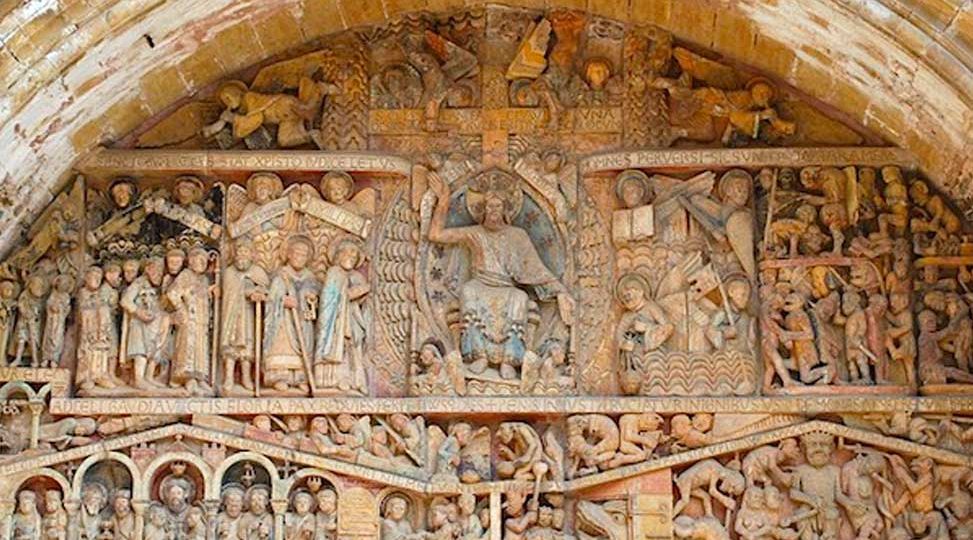
A Tympanum in a Time of COVID
Confronting Chaos and Cosmos with Psychological Types
A World Shadow
Download or listen to this article
Vicky Jo Varner, April 25, 2021
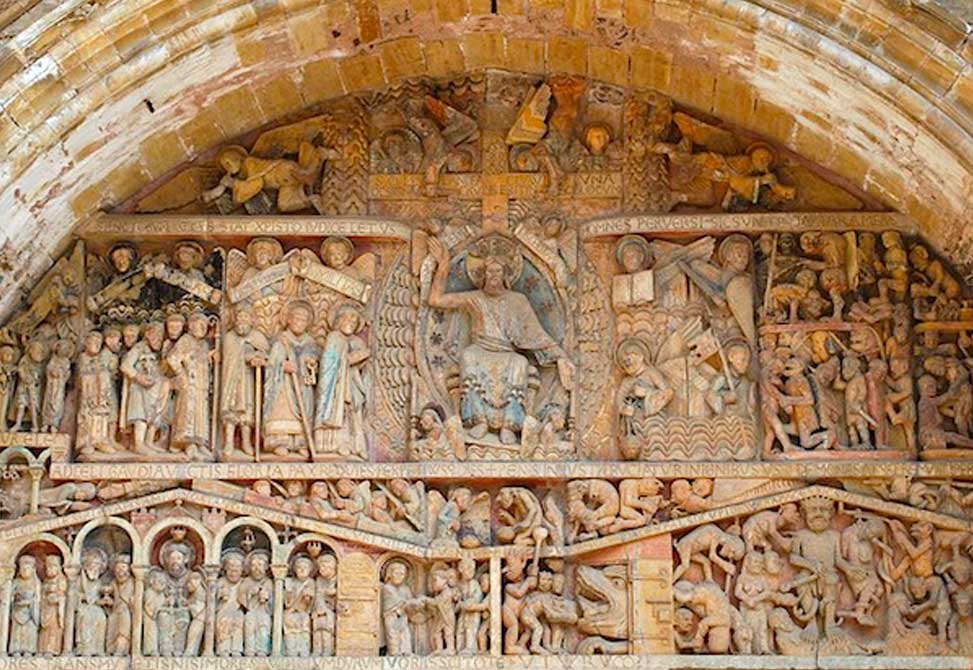
I grasped implicitly C.G. Jung’s (1961/1989) viewpoint when he once described medieval cathedrals in terms of how “the infinity of the cosmos, the chaos of meaning and meaninglessness, of impersonal purpose and mechanical law, were wrapped in stone” (p. 68). Called the “Tympanum of the Last Judgment,” this tour de force was carved in the early 12th century by an unnamed sculptor who intended it as an elaborate warning at a time when most Christians believed the world was soon going to end.
A marvel of medieval storytelling, the scenario is dominated by the figure of Christ enthroned, his right hand raised and pointing upwards to the joys of Heaven while his left hand points downwards to the torments of Hell, a visual separation of saints and sinners—the saved and the damned—at the end of days. As I reflect upon it in hindsight, it seems to depict a remarkable metaphor for the COVID pandemic that has swept the world, a reflection of our myriad conflicts in consciousness. (Aristotle believed a metaphor was “an intuitive perception of likeness in the things that are different.”)
The Conques depiction features that dramatic moment described in Matthew chapter 25 when Christ pronounces final judgment, and the sculptural study displays a mixture of moral, theological, intellectual, liturgical, and feudal elements of salvation and damnation. On the Redeemer’s right side, all is orderly and serene, harmonized with clean, vertical lines, and the virtuous people are going up to heaven to join the saints and heavenly host. There is light, peace, reflection and love, mirroring the world’s beauty and perfection. On the Redeemer’s left side, everything is disorderly and tormented. The lines are confused, monsters are engaged in nefarious deeds, and it exhibits violence, perturbation, and dread.
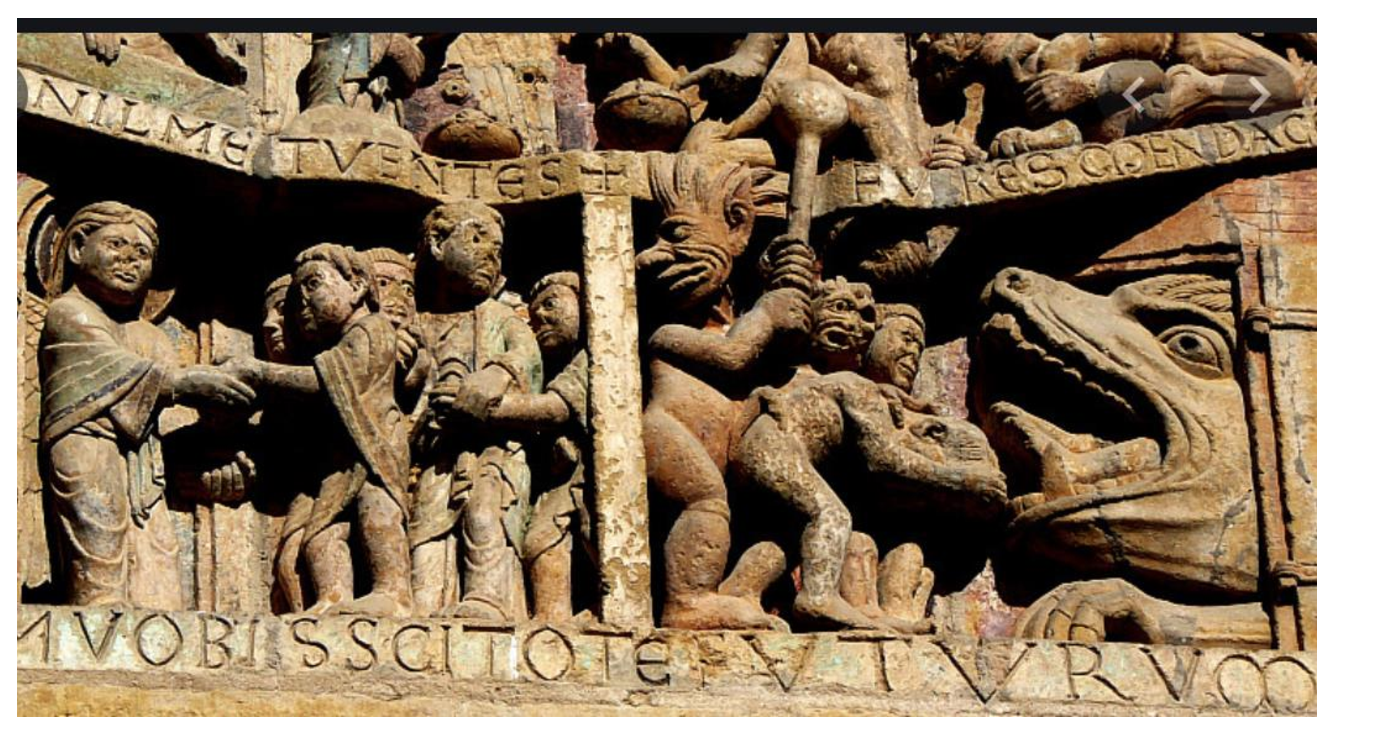
Enormous suffering has plagued us all as a result of COVID, and the tympanum image portrays our psychic experience remarkably well. According to early Christianity, the soul, rather than the body, was the primary locus of suffering in hell, given statements of Pope Gregory the Great as interpreted by 12th-century thinkers. As Hugh of St. Victor characterized Gregory’s sentiments, “the force of pain is established not in the torment but in the feeling of the sufferer” (Migne, 1880, pp. 585-586).
All of civilization is currently feeling stressed and fatigued as a result of this pandemic, even as it seems to be easing, and aggravation notoriously moves us away from our most preferred functions. Our ongoing prevalent pressures include concerns about health, economics, politics, social justice, mental and physical decline, grief, burnout, isolation, loss of purpose, and loss of meaning. A need to give attention to our wellbeing is constantly present, and will remain important in the coming months and years, even if we declare the pandemic ended. Simple well-being is the lowest common denominator for deriving fulfillment in life and performance at work, but its nurturance requires a constant focus of intention, attention, and action. We cannot afford to be apathetic. As Julia Cameron (2002) observed, “Sloth, apathy, and despair are the enemy” (p. 37).
Four-Function Problem Solving
Jung (1997) stressed that “you cannot possibly deal with certain situations in life with one function only [usually one’s superior function]” (p. 58). Jung (2012) described even greater complexity to the four functions by enumerating their unique qualities. He characterized a “static reality that comes to us through sensation; the dynamic reality revealed by intuition; static images given us by thinking; dynamic images sensed by feeling” (p. 134). There is much to unpack in that brief declaration pertaining to reality, movement, and images, but at the core there are different stratifications of reality, and we live inside all of them. Jung asserted, “The world has these four aspects of reality. We have no way of knowing whether the world is Cosmos or Chaos, for, as we know the world, all the order is put into it by ourselves” (p. 134). We harken back to the Conques tympanum’s division of cosmos and chaos as Jung thereby affirmed the value in engaging with all four functions so as to address our human challenges and set matters in order. Just as Christ was the arbiter of human souls on the Conques tympanum, we may engage our inner self to negotiate the chaos within our own psyche. As Jung (1976) explained, “The self or Christ is present in everybody a priori” (p. 725).
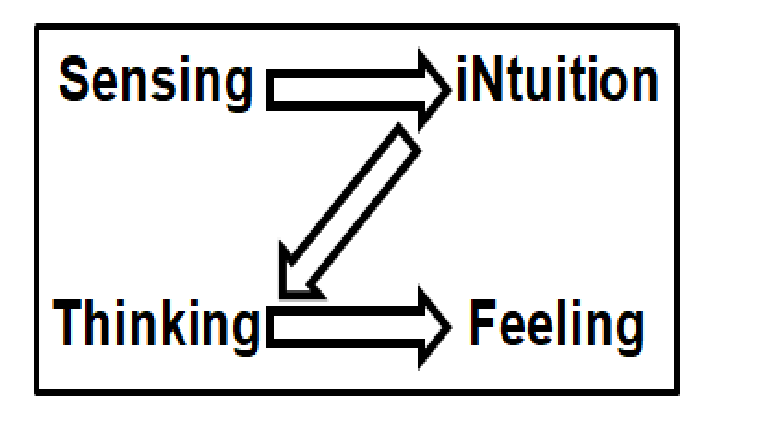
Following Isabel’s sequence, Lawrence suggested that one begin with the sensing function, asking questions such as “What do we know for sure?” followed by using intuition to speculate on patterns and connections formed by the facts. Next was thinking, which would perform an objective analysis on the ideas obtained thus far. Lastly, feeling would be used to consider human values and consequences.
In Lawrence’s words, “we start constructively with Sensing to identify the facts.” Next, we move to intuition to discern “the meaning of the data” followed by thinking “to analyze and decide the logical consequences.” Finally, feeling is used to “test the human consequences” and “harmony with basic personal values” (Lawrence, 1993, p. 185). Paying attention to all of the individual functions in this manner encourages mutual respect and the constructive use of differences between and even within individuals. As Angelo Spoto (1995) explained, “Each function plays its part in connecting us with the whole of reality” (p. 48). If any one of the functions is left out or an attempt is made to exclude it, those attempting to solve problems or make decisions are leaving aside a vital chunk of reality.
The Z Model has been featured in literature and endorsed by many typology experts, including Otto Kroeger, Allen Hammer, Daryl Sharp, and Ross Reinhold. In the field of coaching, questions are creative acts of intelligence, and a set of questions may be asked at each of the function points in order to prompt for answers that might help to solve any problem. Similar to Lawrence, for example, Daryl Sharp (2001) proposed asking the following: What are the facts? (sensation); What are the possibilities? (intuition); Have I thought it through? (thinking); What is it worth to me to pursue this? (feeling) (p. 18). This approach to decision-making was designed to help people work their way through any presenting issue from the four dimensions of psychological types.
Eight-Function Problem Solving
But times have changed. John Beebe introduced his concept of an eight-function model of psychological types in 1983 at “a conference for Jungian analysts and candidates at Ghost Ranch in Abiquiu, New Mexico” (Beebe, 2006, p. 41). Since we are now dealing with eight functions rather than four, it feels inadequate to employ the Z Model for exploring options thoroughly. This is especially relevant since the eight-function scheme can facilitate a more complex and comprehensive assessment of oneself with greater precision than the fundamental four-function model alone provides.
When I undertook my coach training in 2004, I was introduced to a soft self-rating assessment dubbed “The Wheel of Life.” Using this tool, coaches explore various facets of a client’s being. The assessment presents a simple mandala shape that provides subjective measures of how clients feel about their status in the domain of several areas of life, such as career, finances, family, and so on. In that sense, it is very much like the MBTI® in that it is self-reporting, merely reflecting (or indicating) an individual’s subjective opinion of the quality of their life experience.
A traditional Wheel of Life is typically divided into eight segments. Given that particular number, it occurred to me that it would be interesting to eliminate the labels pertaining to various life dimensions and to replace them with the eight functions of consciousness, meaning typology. It was a straightforward swap. I subsequently learned that Jung (2012) presented a mandala of type in his 1925 seminar featuring the four functions separated by “blends” of the two adjoining functions, comprising Sensation-Thinking, Sensation-Feeling, Intuition-Thinking, and Intuition-Feeling (p. 128). His array seems less effective for problem-solving, however.
Next, I spent some time configuring the loop and determining which functions should go where. After experimentation, I ended up with the eight functions alternating between their extraverted and introverted forms and laid them out clockwise as follows: Se, Si, Te, Ti, Fe, Fi, Ne, and Ni, which resulted in a model I dubbed the “Wheel of Type©” (Figure 3). I was delighted to discover how its design mirrored other approaches, such as Tibetan mandalas and Native American Medicine Wheels. Jung (1961/1989) believed “the mandala … corresponds to the microcosmic nature of the psyche” (p. 196), so it is a magic circle of selfhood.
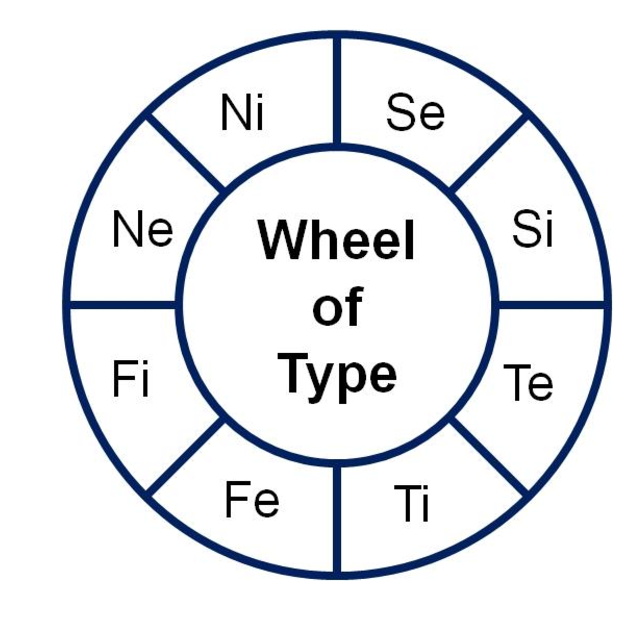
I integrated this approach into my Type Discovery practice in 2004, and individual coaching clients with a variety of concerns responded positively, as have teams and groups, including attendees at the 2009 APTi Conference held in Dallas, and again at the 2011 APTi Conference held in San Francisco. I demonstrated it there as a coaching framework and provided my participants with an opportunity to coach one another on the spot and investigate its efficacy. For these experiences, I taped the Wheel to the floor as large as I could make it, with printed sheets labeling each wedge with a function. We then moved through the Wheel as a group, pausing to sense and embody our relationship with the function in each one of the segments. Afterwards, I invited the participants to pair up and practice coaching one another from within the eight sectors. Several attendees reported powerful shifts and insights as a result of this simple activity, perhaps affirming thereby the inherent circumambulatory movement of the psyche.
Following are some of the generic problem-solving questions I invited the participants to ask themselves when walking the Wheel (Figure 4). Depending on other contexts and clients, I vary them to address the client’s specific needs, letting my intuition guide me. No precise formula or algorithm will ideally suit every scenario.
Embodied Variations
Responses to the questions need not necessarily be words. Another approach to progression through the Wheel of Type is to allow the Conques tympanum figures to inspire dramatic gestures. According to Ambrose (2011), there is an “art historical tradition of looking to gestures in art to ascertain what emotions they express” (p. 4), so we might conjure that same tradition by using gestures to embody and express the resonances that we feel. When I presented this mandala in San Francisco, I invited the participants to strike a pose that represented their relationship to each function and that would thereby embody it.
Equally, one might sing, dance, or paint a representation of their relationship with each of the eight functions. A participant might be encouraged to invite an imaginary figure to accompany them on their journey—an animal, wise elder, or inner child. One might invite one’s own unconscious to provide an imaginal figure to be a companion and perhaps act as spiritual guide. Since this approach is meant to be depth psychological, each “pilgrim” is encouraged to adopt a mythopoetic attitude and go as deep as he or she is able. The mandala provides an analogy between one’s psychic being and the world—an intrinsic concord—to allow the soul to express itself authentically.
Participants might be invited to consider meditating on the image of the tympanum of Conques and to notice which of their actions seemed to align with the left side of the fresco, and which actions seemed to align with the right side. Remarkable insights may be gained from this simple act of comparatism.
A Beebe Gerund Variation
Another approach for traversing the Wheel is to invoke the single-term gerunds identified by John Beebe (2017) as euphemisms for the functions. This is done for the sake of stimulating the “semantic field” (p. 17) of each function by dwelling on each of the three terms separately whilst occupying the appropriate wedge in the circle, and allowing the psychological energies to arise and color one’s thoughts, and again to embody them. This is a more complex and highly depth-psychological approach to the exercise. I portray them within interlaced circles like a Venn diagram so as to imply a field of activation (Figure 5). Travelers might stand in each gerund’s essence and pose it as a question or series of questions. For instance, “What does ‘engaging’ have to say to me regarding my response to COVID? What thoughts come into my mind in response? What gestures? What poses?” They are encouraged to treat each word like something to savor in a reverie as it acts upon their consciousness and performs its enchantment.
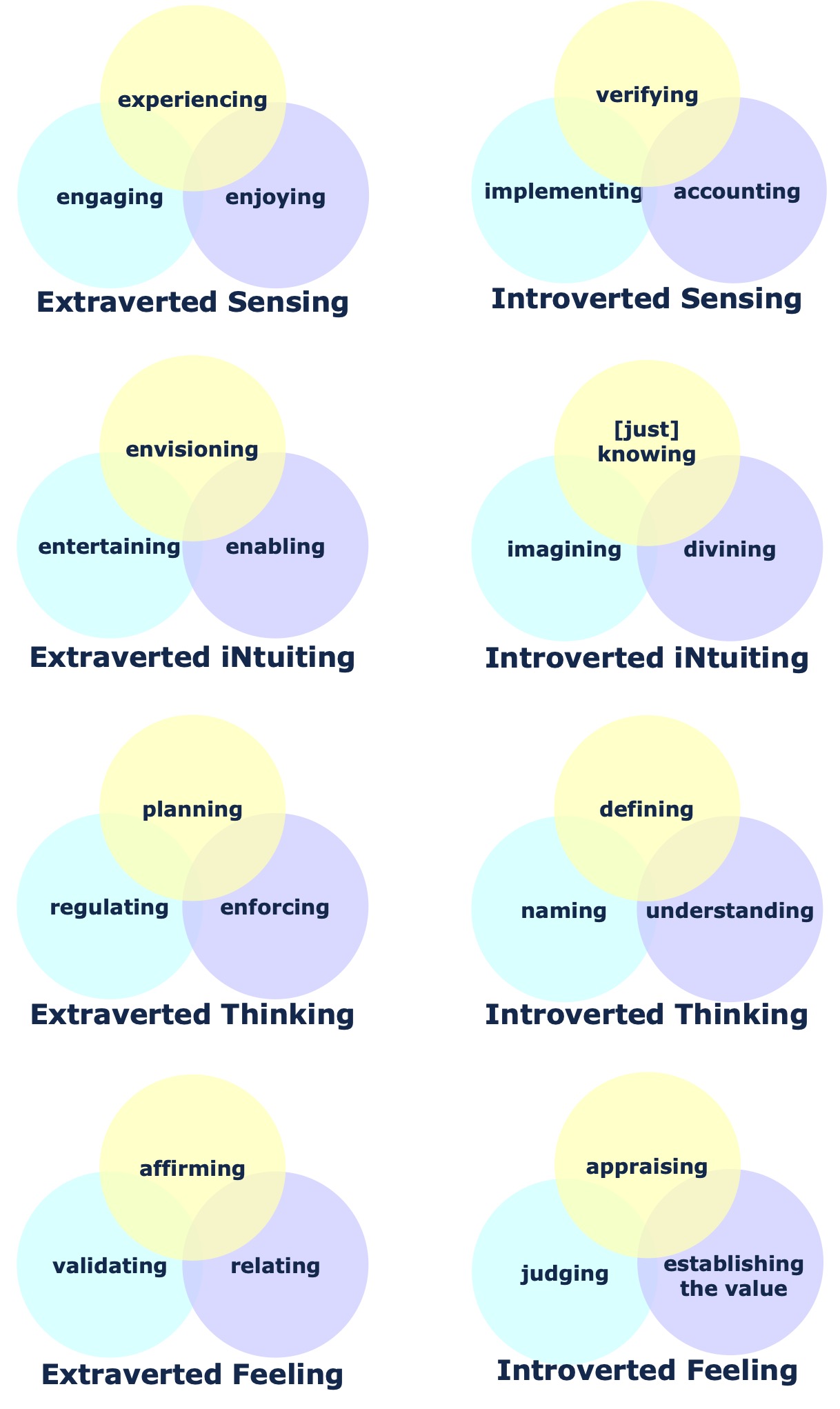
Some warnings of potential pitfalls might be noted here for each of the function realms to point out where we can become mired in them. The sensation functions might get us stuck in a pile of static facts that ultimately offer no movement forward. The thinking functions could catch us up in endless analysis and abstractions, which create an infinite loop. The feeling functions might weigh us down with vague values containing no substance. The intuition functions might launch us into spinning voids of endless speculation. So we must remember to set limits on how much time we spend in each function so as to avoid being overwhelmed in one. A Wheel-walker can always make multiple circuits.
Another factor to consider is how emotions may cloud the numerous issues we are contemplating. As Daryl Sharp (1987) cautioned:
Affect tends to contaminate or distort each of the functions: we can’t think straight when we are mad; happiness colors the way we perceive things and people; we can’t properly evaluate what something is worth to us when we’re upset; and possibilities dry up when we’re depressed. (p. 18)
Thus it may be beneficial for anyone embarking on use of the Wheel of Type for problem-solving to approach it with a calm demeanor, perhaps following meditation or some other relaxation technique.
Coaching with the Eight-Function “Wheel of Type”
The purpose of this exercise is to lure material to consciousness which may have been unconscious previously and to investigate the balance of one’s psyche. People generally are not aware of how they deploy their various consciousnesses. Jung (1921/1976) warned that “the differentiation of one function among several inevitably leads to the hypertrophy of the one and the neglect and atrophy of the others” (¶ 105), unfortunately meaning that we may unknowingly relate to the world through only one of our functions, often the superior function. We may act with refinement and adaptation solely in that singular realm of life. In the remaining realms, we may well remain primitive, unconscious—and could potentially be overwhelmed with fantastic ideas, tidal waves of emotion, and other material to a point where we feel “triggered,” “out of control,” and even become a humiliating and confusing mystery to ourselves. Ideally, Jarrett (1988) suggested, “our developmental task is to become ever more proficient across the range [or in this case, around the Wheel] of the functions” (p. 364).
Becoming well-balanced in the use of all eight cognitive processes is a derivative of individuation and leads to greater harmony within the psyche. Problems arise when we forge ahead with just one psychological function because it seems like the easiest way to deal with life, but it blocks the inclusion of any other material. The mere fact of becoming aware of that—of stopping oneself to check and reflecting that “maybe the way I am looking at this is not enough”—may allow the whole situation to become richer, more proportional, and work itself out.
According to Jungian analyst Michael Whan:
Jung saw the mandala as an attempt on nature’s part at “self-healing,” springing from an “instinctual impulse,” transforming neurotic fixation and one-sidedness through the healing movement of circumambulation. In this way, the roots of the mandala as a “natural symbol” reach down into the world itself, into the macrocosmic ground. (as cited in Burgoyne, 2000, p. 96)
Thus the Wheel is an ideal tool to help overcome our naturally one-sided nature.
It is advisable in general to develop over the course of one’s life as much of one’s psyche as possible—as many of these functions as realizable—so that one may live in various realities at the same time. This way, depending on the need of the occasion, one may shift from one process to another with ease. The person who sticks with only his or her main function and never develops any other process is quite unconscious. People should never hesitate to add another layer of consciousness to their repertoire and learn to enlist the aid of other functions so as to account for all dimensions of reality. As von Franz (2001) explained, “Any complete conscious realization takes place through the cooperation of these four functions” (p. 247).
I encourage others to customize the Wheel for themselves and replace my questions with questions of their own—only be sure the question evokes the function that needs amplification. As Beebe (2003) asserted, “we have to train ourselves to be literate with these; they are each entire worlds in their own right.” To deepen one’s understanding of oneself in relation to the functions, contemplating Beebe’s “fields” of the functions as mentioned above is a good way to achieve this.
Jung (1957/1976) characterized this particular process as “movement in a circle around oneself” (¶ 38) and, whilst circumambulating, many facets of the personality are touched upon, the “poles of light and darkness are made to rotate” (¶ 38), ultimately generating “nothing less than self-knowledge by means of self-brooding” (¶ 39). It is worth considering that Jung’s notion of circumambulation can also be applied at a meta-perspective level when using the Wheel of Type. By this I mean that one can revisit the Wheel several times in order to refine a solution, as previously noted. Each visit takes the issue to another level, opening up additional nuances perhaps not seen during a previous iteration. Often things are hidden in the shadows just behind our light of consciousness, and the Wheel technique helps to coax unseen matters into the light. By disrupting the egocentricity of our consciousness, this work of inner circulation incubates individuated wholeness. We can commit and dive deeply into the process, and remember that awareness is our human birthright.
The Role of Willpower
Jung (1959) once mentioned how:
there is what we might call a fifth function over all these four [typological] functions: the will. This is a peculiar function set above the others with a certain quantity of disposable energy in direct relation to the ego … . The ego is free to use this dynamic function, but only under certain conditions of its own. (p. 107)
It may be useful to evoke that “fifth function” now.
This is not to say we are pursuing an eighteenth-century Triumph of Reason in order to defeat the chaos of the unconscious. Invoking the will is not intended to be an exercise in ego but a way of surfacing as many realities as possible in order to alleviate anxiety and grant ourselves some peace about the remedies we are adopting regarding the pandemic, and to activate our willpower over the elements we do have control over.
After addressing the previous questions posed in the Wheel, one is invited to turn the matter over to one’s will and inquire, “What is one thing that might be done to forward motion in each of the eight sectors?” “What would represent an advance?” “What specific measures will counteract ‘sloth, apathy, and despair?’” As Hildegard von Bingen (1978) ventured: “The soul uses the will, as it were, like her right arm, as a firm support for the veins and the bones and the movement of the whole body, for the will directs every action, whether for good or ill” (p. 80).
A Remedy for Pandemic Anxiety and Fatigue
Synchronistically, Jung (1955) observed that the mandala symbol typically appears during periods of crisis, “in conditions of psychic dissociation or disorientation” (p. 714). Perambulating through the eight-function Wheel of Type is a relatively ordered approach to chaos that can support one around organizing and making decisions about how to be with COVID. Many of us are surely feeling a free-floating anxiety and fatigue after more than a year of the pandemic, but we must not confuse those emotions with the feeling function that Jung identified. Jung said about emotions that they are unconscious; they are involuntary and we cannot control them; and they reveal where we are unadapted. As Jung (1959/1978) asserted, “Affects occur usually where adaptation is weakest” (¶ 15). It seems as though anxiety tends to arise largely from our inferior functions (which means the third and fourth functions) and our shadow, so we ought to pay particular attention to our challenges there.
Remedies could include:
1. Talking it over with those who favor one’s own inferior functions as their own superior or auxiliary so as to invite their perspectives in;
2. Seeing a therapist or life coach to talk matters over with;
3. Engaging in active imagination with the emotions and seeing what wisdom they impart (as Jung did). Emotions are forms of psychic energy that benefit surprisingly from personification.
A further action that lends a bit of perspective is to step back from the Wheel and survey it from a distance. While not sufficient to arrive at an Archimedean standpoint, this distancing can lend a fresh viewpoint—one that coaches term a “metaperspective.” From this vantage point, one might pose this time-traveling question: “How would I like to remember myself as I went through this difficult time?”—whether that is one year out, two years out, five years out, ten, or even twenty years out. Inquiring “How do I want to look back on myself during this time?” is a powerful approach to waking up one’s values and coming into relationship with what is truly important, and choosing to take conscious action toward doing what is best for oneself (Figure 6). Our psyche is a portal or doorway to greater insights, and there is much to be learned from a year or more of isolation and challenging circumstances. Our values usually become more obvious on the other side of a crisis.
Moving through the Wheel alone can be most enlightening, although a coach is invaluable for keeping one focused and on task. Professionally trained, credentialed life coaches possess batteries of tools that act as orienting devices designed to support clients in navigating their myriad challenges, including working with individuals on matters of uncertainty, irrationality, and the unknown. They have been primed to help them locate a satisfying center inside themselves without doling out advice or attempting to provide answers. A coach can pose additional powerful questions to deepen the learning, particularly since all sorts of excuses prevent us from doing this work on ourselves—the most common one being “a lack of time.” Because self-coaching rarely works, a coach provides an element of accountability regarding follow-through. Coaches working with children or family members could inquire about what choices they hope to make about how they are to cope during these difficult times while corporate coaches can use this model with teams to make vital decisions.
Not everything can align with an ideal of orderliness, and our egos often fall short of forcing our lives to unfold in a rational manner. Forgiving ourselves for our disappointments and shortcomings is typically a necessary step in the process. It is preferable that we go easy on ourselves during this crisis and not over-value rationalism. We are a mystery that is unfolding, so let us aim to cultivate the light that shines within.
This typological mandalic approach to confronting our universal COVID issue comprises a focused, deliberated alternative to allowing the pandemic or our unconscious to take over and run the show. It is vitally important to have a steady center, a touchstone to hold onto, and my sincerest hope is that by practicing with this tool, this Wheel of Type, we might veer away from the chaos shown on the Conques tympanum. Perhaps we can use the Wheel to discover a way to live on the other side of chaos within the domain of order and to feel at peace and in alignment with the cosmos yet again, despite the difficult uncertainties and challenges we still must cope with.
References
Ambrose, K. (2011). Attunement to the damned of the Conques tympanum. Gesta, 50(1), 1-17.
Beebe, J. (2003). The self in dreams. Oregon Friends of C. G. Jung.
Beebe, J. (2006). Evolving the eight-function model. Australian Psychological Type Review, 8(1), 39-43.
Beebe, J. (2017). Energies and patterns in psychological type: The reservoir of consciousness. Routledge.
Burgoyne, B. (Ed.). (2000). Drawing the soul: Schemas and models in psychoanalysis (The encyclopaedia of psychoanalysis). Routledge.
Cameron, J. (2002). The artist’s way: A spiritual path to higher creativity. J.P. Tarcher/Putnam.
Jarrett, J. (1988). Jung’s theory of functions: Some questions. Journal of Analytical Psychology, 33, 355-372.
Jung, C. G. (1955). Modern man in search of a soul (W. Dell & C. Baynes, Trans.). Houghton Mifflin Harcourt Publishing Company.
Jung, C. G. (1959). Modern psychology volumes 1 and 2: Notes on lectures given at the Eidgenossische Technische Hochschule, Zürich (E. Walsh & B. Hannah, Eds.). C. G. Jung Institute.
Jung, C. G. (1970). The structure of the psyche. In H. Read, M. Fordham, G. Adler, & W. McGuire (Eds.), The collected works of C. G. Jung (R. F. C. Hull, Trans.) (Vol. 8, pp. 139-158). Princeton University Press. (Original work published 1931)
Jung, C. G. (1976). Psychological types (CW 6). (H. Read, M. Fordham, G. Adler, & W. McGuire, Eds., R. F. C. Hull, Trans.). Princeton University Press. (Original work published 1921)
Jung, C. G. (1976). Alchemical studies (CW 13). (H. Read, M. Fordham, G. Adler, & W. McGuire, Eds., R. F. C. Hull, Trans.). Princeton University Press. (Original work published 1957)
Jung, C. G. (1978). Aion (CW 9ii). (H. Read, M. Fordham, G. Adler, & W. McGuire, Eds., R. F. C. Hull, Trans.). Princeton University Press. (Original work published 1959)
Jung, C. G. (1980). The symbolic life (CW 18). (H. Read, M. Fordham, G. Adler, & W. McGuire, Eds., R. F. C. Hull, Trans.). Princeton University Press.
Jung, C. G. (1989). Memories, dreams, reflections. (A. Jaffe, Ed., C. Winston & R. Winston, Trans.). Random House. (Original work published 1961)
Jung, C. G. (1997). Visions: Notes of the seminar given in 1930-1934 (Vols. 1 & 2). (C. Douglas, Ed.). Princeton University Press.
Jung, C. G. (2012). Introduction to Jungian psychology: Notes of the seminar on analytical psychology given in 1925 by C. G. Jung (W. McGuire & S. Shamdasani, Eds.). Princeton University Press.
Lawrence, G. (1993). People types and tiger stripes. Center for the Application of Psychological Type.
Migne, J. P. (Ed.). (1880). Patrologia latina, volume 176. Pauli Duport.
Myers, I. (1987). Introduction to type. Consulting Psychologists Press.
Sharp, D. (1987). Personality types: Jung’s model of typology. Inner City Books.
Sharp, D. (2001). Digesting Jung: Food for the journey. Inner City Books.
Spoto, A. (1995). Jung’s typology in perspective. Chiron.
Stein, M. (2020). Interview with Murray Stein for Pacifica Graduate Institute. (P. Katsky, Interviewer). Retrieved from https://www.pacificapost.com/interview-with-murray-stein
von Bingen, H. (1978). Scivias. (A. Führkötter & A. Carlevaris, Eds.). Brepols NV.
von Franz, M-L. (2001). Psyche and matter. Shambhala Publications.
Images
The Tympanum at Sainte-Foy, Conques. Photo courtesy of the author.
The gates of heaven and hell. Retrieved





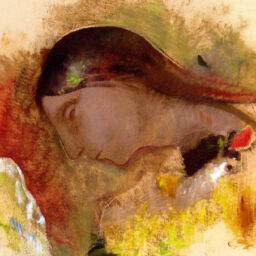

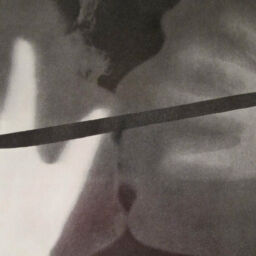
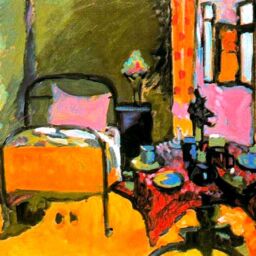
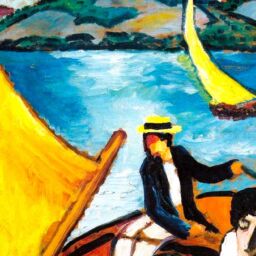
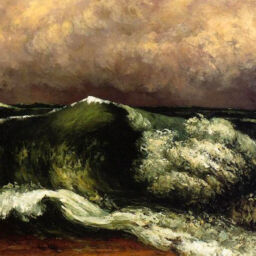
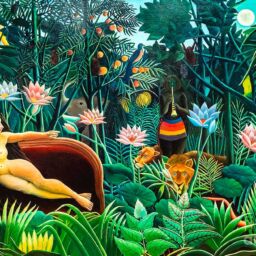
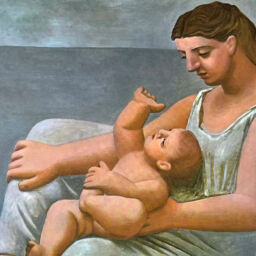

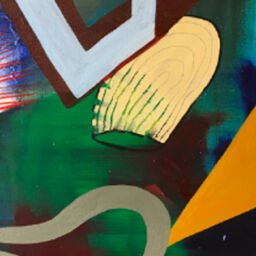
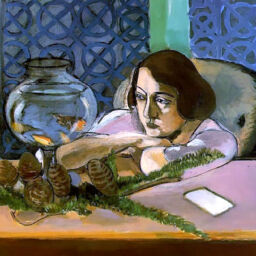

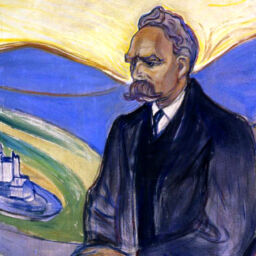
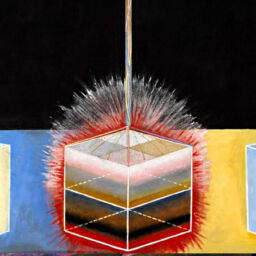
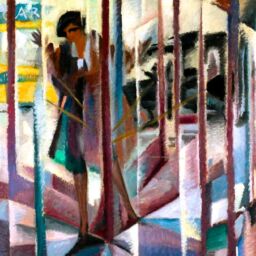
One could make an argument that collectively there has been too much emphasis on the thinking/sensing functions and the neglect of the more yin functions of feeling and intuition has perhaps contributed to the pandemic which has served to get people to reevaluate the old paradigm and contemplate greater sustainability.
One could make an argument that collectively there has been too much emphasis on the thinking/sensing functions and the neglect of the more yin functions of feeling and intuition has perhaps contributed to the pandemic which has served to get people to reevaluate the old paradigm and contemplate greater sustainability.
This wheel of type tool has a certain kinship to consulting the I Ching as a problem-solving method in that the user is prodded to loosen the grip of whatever complex has been uppermost in order to see what other perspectives there might be.